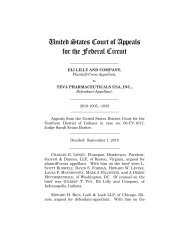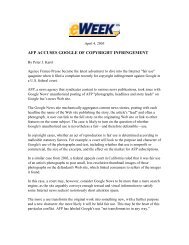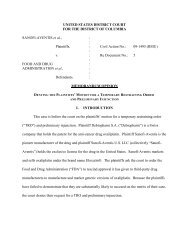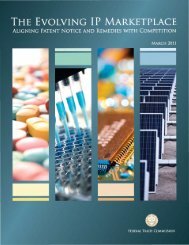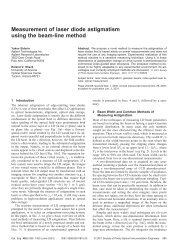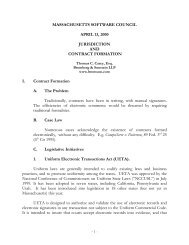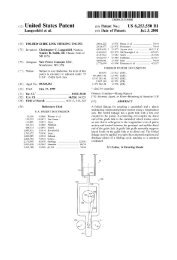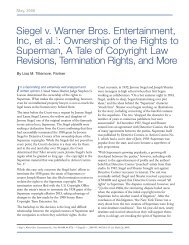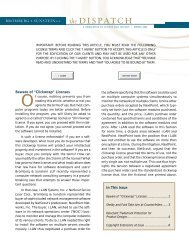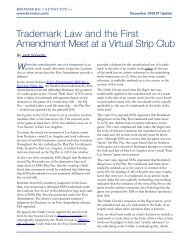Gucci America Inc. v. Frontline Processing Corp
Gucci America Inc. v. Frontline Processing Corp
Gucci America Inc. v. Frontline Processing Corp
Create successful ePaper yourself
Turn your PDF publications into a flip-book with our unique Google optimized e-Paper software.
Case 1:09-cv-06925-HB Document 42 Filed 06/23/2010 Page 20 of 24<br />
review the website and confirm whether it contained a complete description of the goods offered.<br />
See Compl. 75. Based on these claims and the website images provided by Plaintiff, even a<br />
cursory review of the TheBagAddiction.com would indicate that they claimed to sell replica<br />
<strong>Gucci</strong> products. Indeed, Plaintiff alleges that Woodforest printed out a number of pages that<br />
displayed goods that were for sale, including counterfeit <strong>Gucci</strong> products, and maintained these<br />
pages as part of their business records. Woodforest would also perform a second-level review,<br />
performed repeatedly after it accepted the business, where an employee would complete a<br />
purchase and request a refund. Finally, like <strong>Frontline</strong>, Woodforest investigated chargeback<br />
disputes and received supporting documentation that allegedly should have tipped them off to the<br />
infringing conduct. These claims are more than sufficient to suggest, at this stage of the<br />
litigation, that Woodforest knew or shielded themselves from the knowledge that Laurette was<br />
selling counterfeit <strong>Gucci</strong> products with their credit card processing system.<br />
The most significant dispute between the parties with regard to contributory liability is<br />
whether any or all of the Defendants had sufficient control over Laurette and<br />
TheBagAddiction.com website to render them liable for the web merchant’s counterfeiting<br />
practices. As noted above, the control element was incorporated by the Seventh Circuit to<br />
establish a limiting principle that would exclude those service providers that do not really<br />
contribute to the infringing conduct; this Circuit has yet to directly consider the merits or<br />
contours of this modified form of the Inwood test. See eBay, 600 F.3d at 105-06 (noting control<br />
element but “assum[ing] without deciding that Inwood’s test for contributory trademark<br />
infringement governs”). Although the concept of control arose out of the flea market context and<br />
is based on common law landlord-tenant tort principles, see Hard Rock, 955 F.2d at 1149-50, the<br />
concept of control is not limited to that context. Inwood “laid down no limiting principle that<br />
would require defendant to be a manufacturer or distributor,” and “whether the venue is online or<br />
in brick and mortar is immaterial.” eBay, 576 F. Supp. 2d at 505; see also Fonovisa, <strong>Inc</strong>. v.<br />
Cherry Auction, <strong>Inc</strong>., 76 F.3d 259, 265 (9th Cir. 1996); Lockheed Martin, 194 F.3d at 984. The<br />
only relevant inquiry is the “extent of control … over the third party’s means of infringement,”<br />
eBay, 576 F. Supp. 2d at 505; Lockheed Martin, 194 F.3d at 984, and courts have found<br />
sufficient control in an array of service contexts. See, e.g., eBay, 576 F. Supp. 2d at 505 (online<br />
auction house); Cartier Intern. B.V. v. Liu, No. 02 Civ. 7926, 2003 WL 1900852, at *3<br />
20



